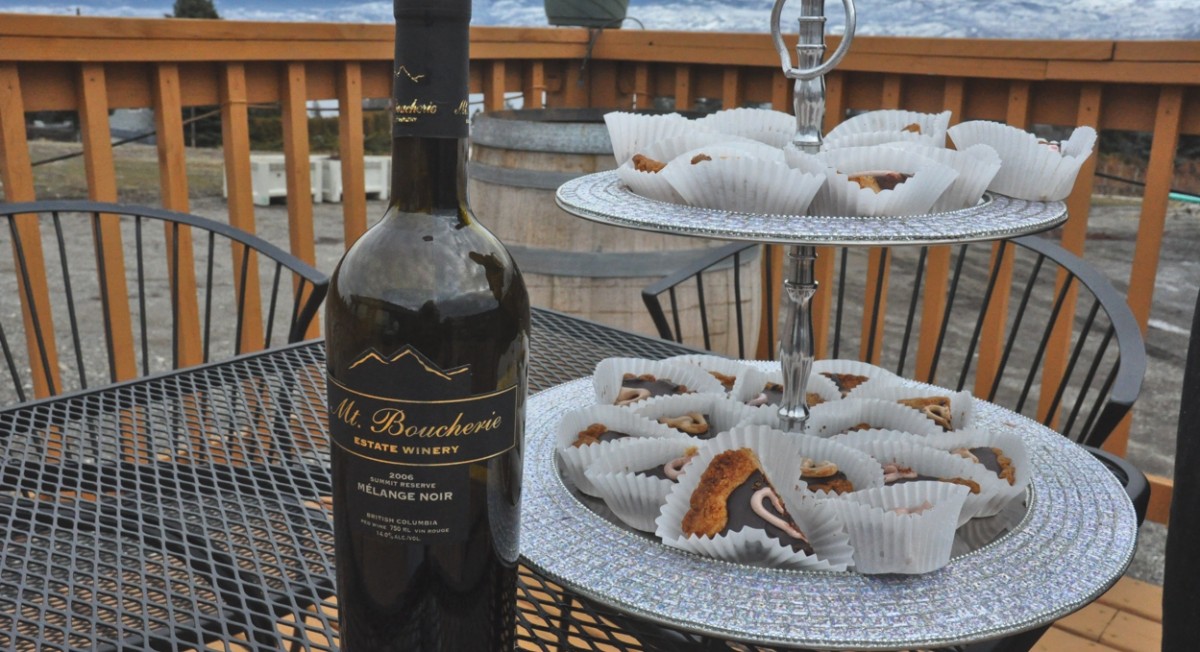I’m not a huge fan of most inexpensive Canadian wines.
In general our climate prevents boosting the yield to the levels enjoyed elsewhere; which in turn means less supply and higher prices. However the quality increase in the better products in the last decade is striking.
There can be any number of factors at work. A willingness by consumers to purchase lets the owners invest more. The vines are more mature. (Alas more than a few wineries made wines from three year old vines to meet their business plans.) That decade has given winemakers more knowledge of their properties and the vines. Whatever the reason there can be no denying the improvement is particularly apparent amongst the VQA Okanagan reds.
Part of the phenomena that is helping out the trend is the admission by the vintners that most of their single varietal products could be improved upon by blending. This is hardly an earth-shattering insight, as traditionally most wines are blends. However the worship of the consumers for single varietals – apparently people assumed if the bottle didn’t specify a grape it was coloured vodka – kept things in a sort of creeping stasis. Vintners would sneak in about 20 per cent of other grapes in a bottle labeled “Merlot” or any other varietal. These days vintners are willing to market medium priced wine, around the mid-twenties, with a more or less unlabeled blend.
One of the better exponents of the new breed is Osoyoos LaRose. This is something of a cult wine in Canada, selling for around $50. A few years ago they introduced a second label for about half that – Petales d’Osoyoos.You could argue that this is the most interesting wine made in the Okanagan for a couple of reasons. Firstly it is unrepentantly old fashioned: It is neither over oaked nor catering to the sweet palate that has developed in the last few years. (Marshmallow vodka anyone?)
Moreover it has also stuck with that formal French wine grammar, holding a real structure. Their attention to detail is apparent right down to the cork. Comparing the cork of Petales to the corks from Mt. Boucherie and Jackson Triggs – two firms who can afford a good cork – is revealing. The Petales cork is much finer grained and feels denser too. I’ll bet TCA taint is rare in this winery.
The formalism makes the palate be a bit tough for many drinkers. The wine is clearly intended to cellar a minimum of ten years and can be stored in wine coolers once its ready for use. You can easily remedy this with a couple of minutes in your blender, or by decanting a few hours before drinking. Or you can do what I did, and open the wines, and drink a glass every day for a week. By day four this was a truly wonderful wine, tasting of cloves and chocolate, a nice acidity to balance it out and with lovely red berry flavours lingering after you swallow.
Mt. Boucherie makes a slightly more approachable wine but this one too is a Bordelais knockoff. I’d bet in a blind test in France it would pass easily as a right bank Bordeaux. (The right bank of the Garonne produces slightly plusher wines with usually more merlot in the blend.) The vanilla scents from the oak were apparent, and the wine was more approachable immediately. It is two years older, a five year old wine, which helps the approachability.
Gray Monk Odyssey is another fine choice as a red blend. This is a winery that has managed to incrementally increase quality almost every year. Their Odyssey label is another fairly stern wine that is structured around the spine of cabernet sauvignon. The rest of the blend is a very Bordelais mix of merlot and cabernet franc.
Again this is a wine I’d resort to the blender or decant before drinking. It can clearly age for several years without losing anything. Indeed it will gain some refinement over time. It starts with aromas of vanilla and caramel. The palate is nicely fruity, and the acidity clean. The tannins will take on Kobe beef if you want them too, and the finish has a sort of fruitiness that is very nice.
This is the most expensive of all these wines, and I think it will suit New World drinkers best.
At about 16 degrees or so, the balance of the wine is tremendously satisfying, with a meaty, smoky core. If you’re buying a wine for drinking tonight without much work – although I think decanting is still a good idea – this is a better pick than Petales.
Jackson Triggs Sunrock Vineyards Cabernet Sauvignon is possibly a little out-classed beside these wines, costing about a quarter less than the Petales. But this is a really solid wine, and a fine modern style cabernet.
[related_content slugs=”alsace-vs-canadian-gewurz-with-dr-booze,luzon-and-organic-wine-with-dr-booze,dr-booze-on-the-subtlety-of-pinot-blanc,dr-booze-on-italian-wines-priced-to-drink” description=”More from James Romanow” position=”right”]
It is smooth without being unctuous, fruity without being sweet and having an excellent structure. The wine is better for decanting, and I’d rather drink it five years from now when it is a little leaner, but I expect most drinkers will prefer it just the way it is. In the last couple of years that the Okanagan reds of Jackson Triggs are going from strength to strength. They now represent real values for red drinkers.
All these wines will taste better at least five degrees below room temperature.
Mt. Boucherie Summit Reserve, Canada, 2008. $25 ****
Jackson Triggs Sunrock Cabernet Sauvignon, Canada, 2009. $20 ****
Petales d’Osoyoos Canada, 2010. $27 ****
Gray Monk Odyssey, Canada, 2010. $30 ****
–
James Romanow writes about wine and all things boozy for the Spectator Tribune. Follow him @drbooze.
